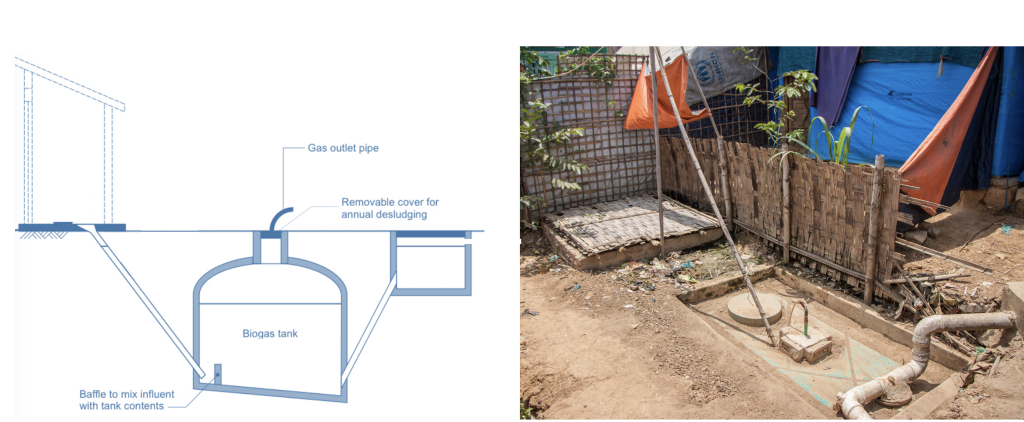2.4 Overview of different types of biogas sanitation units
This chapter provides insights into different types of anaerobic treatment systems used for sanitation.
Biogas settler and biogas septic tank

Biogas settlers are rectangular or circular tanks, either with or without baffles, that are designed to create an airtight environment. In the case of rectangular tanks with baffles, they are commonly referred to as biogas septic tanks. The primary purpose of a biogas settler is to facilitate the separation of solids and liquids while also promoting the anaerobic degradation of solids by providing an extended sludge retention time and generating biogas for use. The biogas settler can be used as either a pre-treatment unit at faecal sludge treatment plants or as onsite sanitation by replacing a septic tank with further treatment or infiltrating effluent and post-treatment of solids.
Module 6 will discuss the results of the 2019 assessment by UPM on biogas toilets within the refugee camp in Cox’s Bazar, Bangladesh.
The table highlights the pros and cons of biogas settler and biogas septic tank.
| Pros | Cons |
|---|---|
| Simple and robust | Expert design and skilled labour are required |
| Biogas generation | Incomplete pathogen removal. Effluent and Digestate require further treatment |
| Greenhouse gas emission reduction | Susceptibility to temperature fluctuations |
| Space saving, if underground | Special knowledge and expertise might be required to repair a balloon digester |
| Long life span, if maintained and operated correctly | The issue of short circuits needs to be addressed in the design |
| Relative low capital and operational cost | Variable range of gas pressure |
| Low risk of odours and resistance to shock loads | Limited gas production below 15°C |
| Effective pre-treatment of high-strength influent | |
| Adopted from: (Eawag) (SANIMAS, 2005) | |
For further information, please click on the Materials tab at the top of the page.
Further Reading:
- Biogas Settler (Link)
- Biogas Systems in Lesotho: An effective way to generate energy while sanitising wastewater. P. 10 -17 (Link)
- Decentralised Co-Digestion of Faecal Sludge with Organic Solid Waste (Link)
- Technology review of biogas sanitation (Link)
- Comprehensive Overview of Biogas for Sanitation Options – Training of Trainers p. 37 – 38 (Link)
